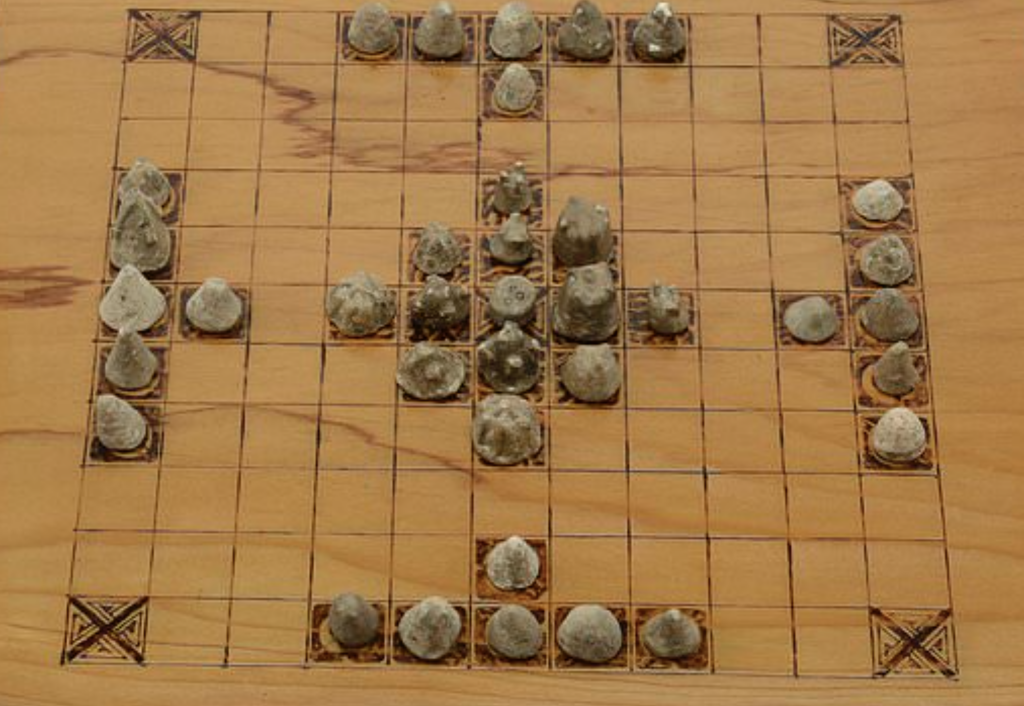-
×
 Xenomorph Cryo-Tube Lamp
£74,00
Xenomorph Cryo-Tube Lamp
£74,00
Subtotal: £74,00
Hnefatafl, also known as Viking chess, was an important part of Viking culture and society over 1,000 years ago. As a strategic board game played throughout Scandinavia and areas settled by Vikings, Hnefatafl helped develop important warfare skills and was deeply ingrained in Norse mythology and sagas. While the exact rules of Hnefatafl remain unknown today, archaeological findings and historical references provide clues about this precursor to modern chess. Multiple variations of Hnefatafl existed, with the closest documented version being the Sami game of Tablut observed by Carl Linnaeus in the 18th century. Despite its replacement by chess in medieval Europe, efforts to reconstruct Hnefatafl have led to renewed interest and competitive play according to adapted rules.
Hnefatafl was not merely a game of leisure but served an important practical purpose for Vikings. As seafaring warriors, Vikings faced constant challenges of battle and maintaining military strength. The asymmetric design of Hnefatafl, with unequal numbers of attacking and defending pieces, mirrored real world combat situations. Playing Hnefatafl helped develop important strategic thinking and problem-solving skills transferable to warfare. References to Hnefatafl in Norse sagas also suggest the game held spiritual or religious significance to Vikings as a reflection of cosmic order. Archaeological findings of elaborately decorated Hnefatafl game sets imply the game denoted high social status as well. It is theorized the popularity of Hnefatafl declined as chess rose to prominence in medieval Europe due to favorable depictions of chess in literature as a pastime of royalty.
While the exact rules of Hnefatafl remain debated, multiple regional variations were documented. Archaeological evidence reveals colorful game boards and pieces made from materials like whale bone, glass, and amber. Literary sources provide clues about regional names for the game like Brandubh in Ireland and Tawlbwrdd in Wales. The closest fully documented version is Tablut, observed and described by Carl Linnaeus among the Sami people in northern Scandinavia in the 18th century. Tablut involved asymmetric forces on a 9×9 grid with the objective of either escorting the central “king” piece to the board edges or capturing the king. Others like Ard Ri featured slightly different setups and objectives but retained the same basic premise of asymmetrical attacking and defending forces. Norse sagas also reference the strategic significance and spiritual symbolism of Hnefatafl through context and descriptions of gameplay.

Knowledge of historical variations like Tablut eventually helped reconstruct rules for playing adapted versions of Hnefatafl today. Initial efforts in the 1970s-80s faced challenges as the first English translation of Linnaeus’ Tablut description contained errors. More accurate modern translations enabled refined rulesets producing balanced gameplay. Specific modern adaptations use 11×11 or 13×13 grids with symmetric pieces ratio and different objectives like escaping to corner spaces instead of all board edges. Competitive play emerged with organizations like the World Tafl Federation hosting annual championships. Further rule variants give Hnefatafl new life online or through specialized board game releases. Scholarly associations also organize conventions discussing archaeological information and sagas with implications for history. Interest in reviving Hnefatafl honors its cultural significance for Norse peoples while maintaining strategical depth befitting its Viking heritage.
As a strategic board game deeply ingrained in Norse culture over 1,000 years ago, Hnefatafl holds broader meaning beyond recreation. Its asymmetric design trained important military strategy skills for Vikings through competitive gameplay. References to Hnefatafl in Norse literature also suggest spiritual symbolism reflective of Norse cosmology. While we may never fully reconstruct the original rules due to lost sources, ongoing refinements based on historical clues sustain Hnefatafl as an adaptable game. Competitive play honors its historical context while keeping strategic complexities relevant today. Most importantly, renewed interest in Hnefatafl celebrates Nordic heritage by preserving aspects of classical Viking life otherwise lost to time. Through ongoing scholarly study and recreational play, this ancient precursor to chess continues illuminating Viking history and culture.
Pingback: Hnefatafl: The Ancient Norse Strategy Game Origins and Rules - Gothic & Rock | Clothing & Accessories Brand
Pingback: The Ancient Strategy Game of Hnefatafl Comes to Life Online - Gothic & Rock | Clothing & Accessories Brand